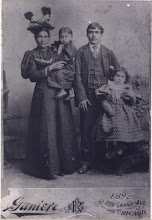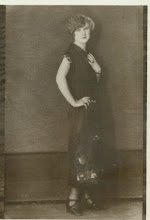My brother asked me why I was dreading writing my history lessons… So, here I am, trying to fit them in at the last possible moment. Yes, I am a closet procrastinator.
Part of the problem is I really need to have my reference books with me to get this right, but I never seem to be in the same place with them when I'm writing this blog. So I'll give you some highlights. I thought it would be interesting to post this after the chapter on Pompeii… just to juxtapose the life styles.
It is easy for me to imagine what it was like to say your grandparents were pioneers in America. I think of Westerns and , of course, "Little House on the Prairie". The Ingalls were a poor family, weren't they? I remember having maple sugar for a "snow cone" was a big treat. They had an outhouse and a handpump for water. But , no, the 1800's in Italy wasn't like that.
And it certainly wasn't like those glorious movies with kings and queens and beautiful gowns.
And it wasn't the middle ages with plagues and rats and filth in the streets, because… the middle ages was before the renaissance, right?
Yes, I knew they were poor and starving and came to America for a better life. I knew they were farmers, but how could you farm if you lived on a mountain of rock? I think our grandparents who came from Ireland had a lifestyle we can picture more clearly. At least those that farmed lived in quaint villages with cottages on their farmlands. Not so the Calvellesi.
As I said before, the Italian peasant was extremely afraid of the countryside and would never have considered living outside of a town. Partly this was due to the prevalence of brigands in the forests and countryside… but it also was simply superstition and religious ideas about demons, etc. According to Herman Tak, even today the people in town think it is odd for someone to live out in the countryside. Anyone who lived in town would call themselves a townsperson, not a country person…even if it was a small town and they worked the land.
Our great-grandparents lived on Via Casteleone which was near the castle. I think Margarita, Gianni and I might have seen it but the street nearest the castle is now named via Carbonari. There is no way that would have been the name of a street back right after the revolution. I did look for a #10, but found house numbers above and below that, no number 10. Anyway, it was far far up the mountain and every day they had to get up before dawn and walk to their fields and come back after dark. And it was a long walk. For some farmers in Basilicata it was an hour to the fields and an hour back up the mountain to come home. Carrying tools, children, crops, and probably balancing something on their heads.
In the winter there was little to do except try to make the food last through the winter and pray for a good season the next year. Therefore, there was time for many feasts and religious celebrations. It was probably their big entertainment.
The farmers wore wooden shoes… not like the dutch exactly… but more like a sandal with a wooden sole (sort of like Birkies but with wood instead of cork). Even into the 1900's they farmed exactly like they did in the middleages… with the same crude tools.
The wealthier women weren't allowed to be seen out of the house, except for church of course. Married women wore scarfs, almost like middleeastern veils, almost always in black. Only the country peasantwomen were seen outside because they worked the fields. Peasant dress for festivals also usually included colorful scarves over their heads or like a small triangular shawl over their blouses. ( We noticed Vincenzo's mother wore a scarf over her blouse, and that nowadays every single woman in Italy (and most men) wear long scarves, even when its not that cold out.)
There was no need to read and write unless you were a legale or avvocato and they apparently needed many lawyers… to read for others, write up agreements, and deal with continual disputes about landholdings, inheritances etc.
Most people didn't own a donkey (there would have been a tax to pay if they did), but there were people who's job it was to keep donkey's (Muleskinners) and they would lend them out. So pretty much everything had to be carried by men to and from the mountain to the fields or markets. If you owned animals they either lived in your home with you (probably a small one room place), or beneath your home in what we would think of as a garage.
There was a mill and a bakery owned by a family in town. No one had their own oven…. Except for possibly a few wealthy families. In fact, the townswomen would carefully make their breads, with their own special recipe or method, and then mark the bread in with their own "design" so that their bread wouldn't get mistaken for another's. They didn't eat a lot of bread however. If they were "average, middle class", bread would be made once a week. And when it got hard, they would have bread soup. They mostly ate macaroni which is the common name for all pasta (not just elbow macaroni, but even spaghetti). The southern Italians were called "macaroni eaters" as a derogatory term. And, yes, they did make and eat polenta from corn, although this was more common in the north. My bisnonna must have been in heaven to have her very own brick oven in the back yard in Chicago.
In Calvello it was the tradition for the town to have a "town pig" which was fed by everyone, and on the feast of San Antonio Abate, it was slaughtered and given to the poorest family in town. We were there on the feast day of San Antonio Abate but missed the ceremonies. However, the night of the festa, Vincenzo told us that, while we were sleeping at the hotel, several men slaughtered pigs… to make sausages etc. It was part of the tradition. Also part of the tradition, but now illegal, was a gambling game they played. One person donated a rooster or other animal and got a cut of the gambling proceeds. Others gambled on who would win the rooster. The rooster was hung and then each man/boy took their turn wacking at him with a not vary sharp axe. The lucky winner was able to provide his family meat which was a very rare event.
Plumbing? No, they didn't have it in Calvello, or if they did, it was in serious disrepair. The roads had a little ditch dug in the middle for the waste which was usually thrown into the streets. How could you retrofit a town when it sits on solid rock? I read that it stank unless they had rain to wash things away. People washed in rain water, and although there was a city water fountain to provide drinking water, it became very polluted by the 1920's and was not potable. Same was true of the charming little creek running through the town. At one time the source of eels which were fished for food. Women did their laundry at the community laundry sinks or possibly over rocks in the river. Luccio Ferri told the story "joke" told by one Calvellesi in America when another was homesick or planning to return. "Take an Umbrella and Regularity". An umbrella because the chamber pots were dumped into the main streets, and regularity because the public "trench" was down by the river and there were specific hours for men versus women.
Calvello was once a fairly prosperous town but the land had been overfarmed. And the people were over taxed. Even after the Bourbons, the mis-government of the South continued. The king (and the ruling class) were from the North, didn't realize that the land in the south couldn't be taxed in the same way as in the North where the farmland was much richer. So the South continued to suffer, more each year, until people began "voting with their feet" leaving the land that could not provide for their families.
When I visited Ellis Island years ago or watched "Streets of New York", I saw the horrible living conditions, in close quarters, that the immigrants had to survive. I cried when we visited that museum. But now, I bet it wasn't that part that bothered the southern Italians. Yes, they were cheated and treated horribly. But, I bet the living conditions didn't bother them as much as it bothered me. They weren't used to having great living conditions, but I bet they missed the beautiful countryside.
It is incredibly beautiful… snowcapped mountains from Calvello to Naples, to Rome… green fields (probably they get more brown in the summer)… bright green from all the recent rain. Lush and lovely.
So, when you compare Pompeii, to medieval Viterbo to Calvello, you don't really see much change in the way of living. How much has changed since 1900?
The main thing that seemed to change was the politics, and no matter who was put in charge, it seems like the Southern Italians suffered more and more. The country is celebrating their 150year "birthday", and yet, there has really only been about 50 years of stability without war. It is still a very new country even though the roots run deep.
Here are some more "mountain people" plates from Alessandra…and a few from Calvello as well. (I have a "thing" for handpainted pottery). It is amusing to see the funny scenes of the hunters, isn't it? I can imagine these scenes happening in the mountains of Calvello.
Maria Catrina





